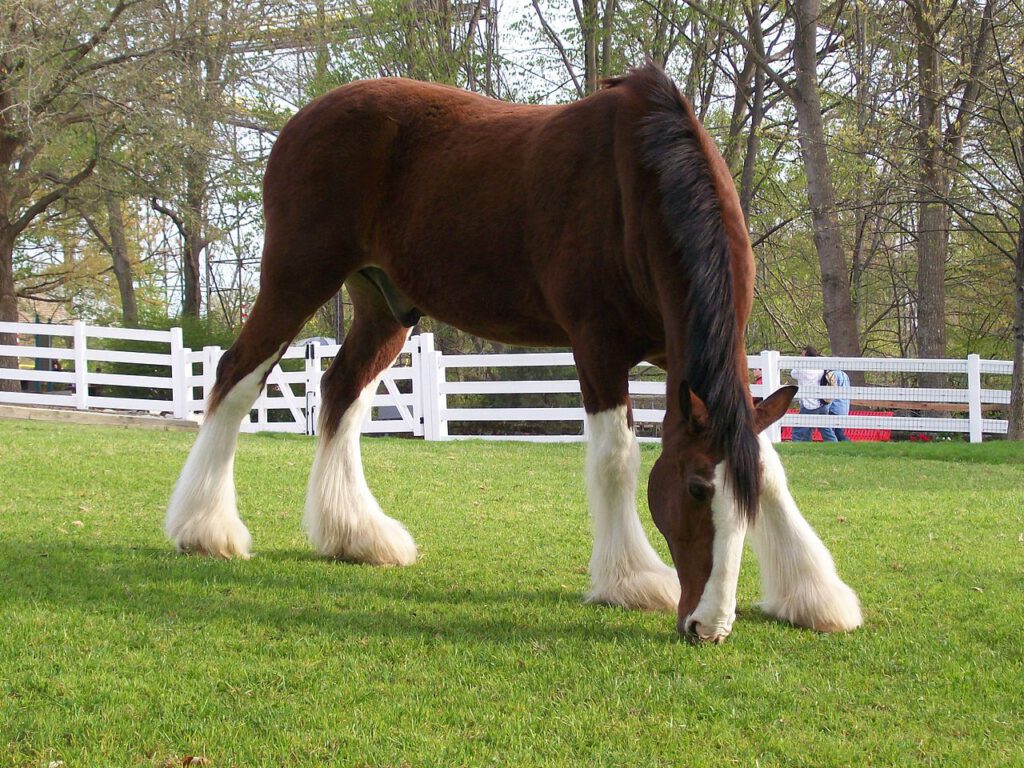The Clydesdale horse
This draught horse owes its name to the Clyde valley, a Scottish river that flows into the Atlantic, the cradle of the breed. It is said to be descended from black Flemish stallions imported from Flanders in the 17th century and crossed with robust farm horses from the county of Lanarkshire.

In the eighteenth and nineteenth centuries, stallions of the Shire breed were used to obtain a horse that was heavier but less massive than the Shire. The first horses named Clydesdale were presented in Glasgow in 1826. The Clydesdale Horse Society was created in 1877 and the Studbook was opened in 1878. After a period of exports to many countries including the United States, the breed almost disappeared in the 1970s. Its numbers are again on the rise thanks to a renewed interest.
Caractère et aptitudes du cheval
Balanced, peaceful, sociable horse. Hardy, powerful, lively; its gaits are energetic and ample.
Utilisations du cheval
Remarkable draft horse, ideal for urban transport, driving and agricultural work. It adapts to leisure sports. As with all draft horses, it is often difficult to find a suitable saddle, due to the Clydesdale’s imposing size. The hair on the limbs also requires specific attention and constant maintenance, as cracks and other skin problems may appear. The dewlap is also weakened in case of too much humidity, it is necessary to be vigilant if the Clydesdale horse will live outside (and therefore potentially in contact with mud) or in a box with an environment.
Morphologie du cheval
Long, thin head. Straight or convex profile. Wide open nostrils. Large ears. Large eyes. Body of brevilinear type. Long, moderately thick neck. Thick, prominent withers. Sloping shoulders. Wide chest. Broad, deep chest. Short and strong back. Wide loins. Well-muscled hindquarters. Strong and slightly sloping croup. Limbs relatively long, dry, and nervous. Long pasterns. Abundant dewlap. Large and strong hooves. Tail well set on. Coat: brown, bay, black and grey. Often a white mark on the head and several barnacles. Size from 1,62 to 1,70m.
For more information: The Clydesdale


